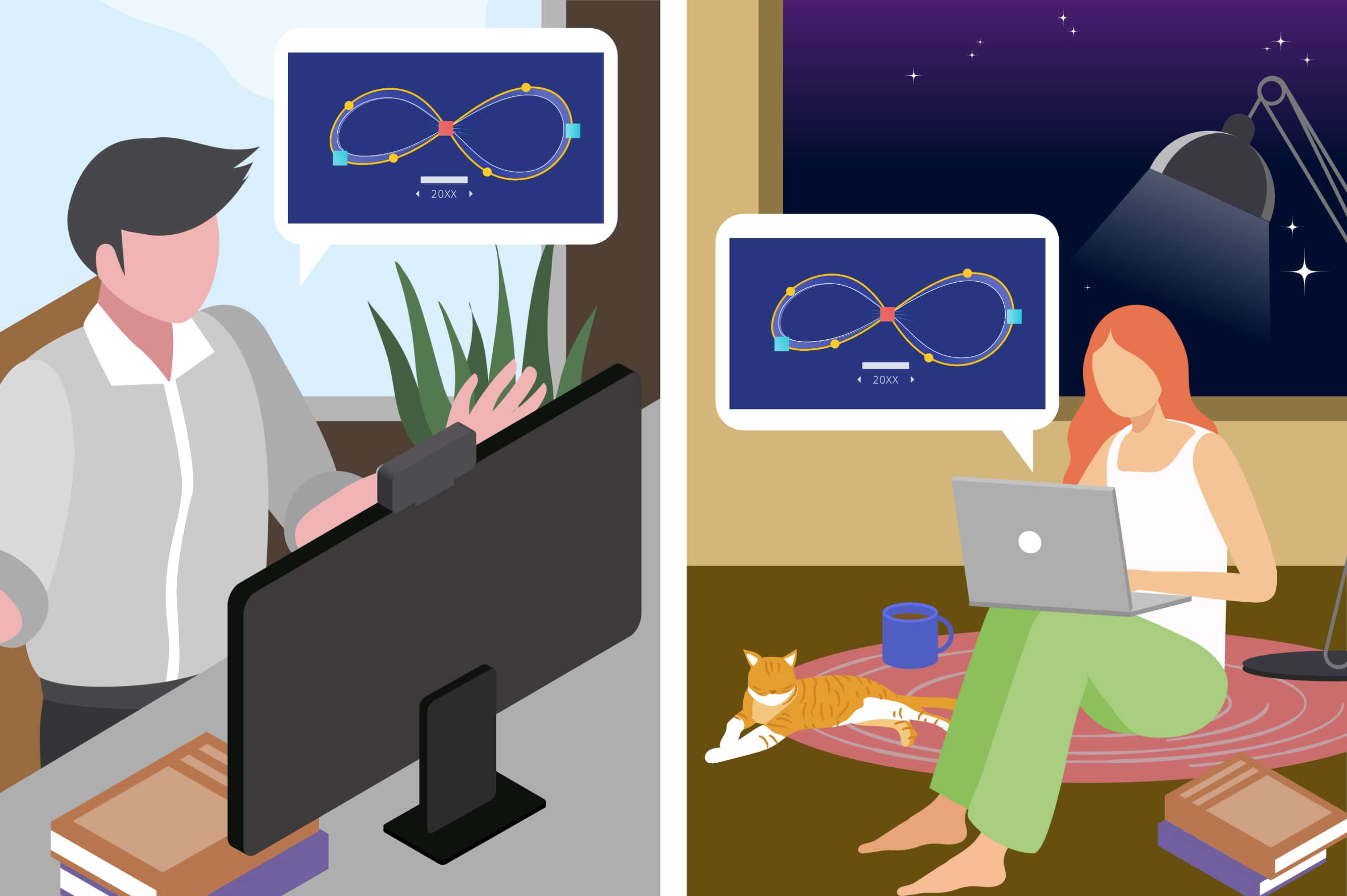If you’re anything like us, you’ll have looked at a word such as “asynchronous” and immediately thought, no thank you, that’s not for me, and scrolled on. However, posts regarding the continuous change in office hours following the pandemic have spurred new discussions around how businesses have adapted to work from multiple locations and across multiple time-zones.
What is asynchronous work? What could it mean for you? Or are you already doing it without knowing?
Asynchronous Work: Defined
Asynchronous work may sound complicated, but the concept itself is simple. Before the pandemic, with more people working in office and during the regular 9-to-5, the goal was always for the team to synchronise, attending group meetings and scheduling times to work on a collective document or presentation together. However, those who have returned to work following the pandemic will have undoubtedly noticed a shift in the way businesses operate on the day-to-day.
New starters who joined during the pandemic may have started on a remote contract, and as such are either hesitant to or unable to attend a physical office. Companies who may have previously not considered flexible hours suddenly had to make adjustments for working parents and carers, to ensure that they could balance their at-home responsibilities with their work ones. However, as there has been a desire from businesses to get their employees back into an office, there has certainly been a healthy level of kick-back from those who signed on for a flexible, remote role and see no reason why this should change. As a result of this increased flexibility, businesses have had to adapt their way of working to an “asynchronous approach” which allows teams to continue to collaborate at different times.
How does it work?
An increasing number of businesses are using shared platforms, such as SharePoint, Google Drive or DropBox to work collaboratively across documents. The beauty of these platforms is that they allow you to make edits anytime, anywhere. This in itself is not a new concept.
However, the modes of communication associated with working on these shared files has certainly changed- whereas before managers may have booked a meeting room or scheduled a Zoom meeting to "synchronise" the team, more are utilising short-form memos, instructional videos and collaborative documents to speed up the process, rather than spend time coordinating diaries across availabilities and timezones.
The Pros and Cons
Fans of the "asynchronous" approach emphasise that it means increased freedom and less micromanagement, as they have great agency over how they structure their days and can more efficiently communicate brief points that may have otherwise added time to already lengthy catch-up calls. Many also prefer the memo-management set up to the constant scheduling of meetings that they see as inefficient and unnecessary. With 71% of meetings considered inefficient and unproductive (Harvard Business Review) it's no wonder that many feel a shorter, concise form of communication is the best way forward.
Concerns only really arise when considering how less contact time could impact remote workers who are already susceptible to feelings of isolation. Could another, distanced method of digital communication impact the overall culture of a business? Though this is certainly a point to be conscious of, there is nothing to suggest that a more "asynchronous" approach to work cannot go hand-in-hand with maintaining connections with your colleagues. Although less time would be spent in formal business meetings, there is still the option to connect with team members, whether virtually or face-to-face.
From a Business Perspective
Asynchronous work also has the potential to be particularly cost effective for businesses looking to utilise international hires. For example, businesses with a base in the US can hire from the UK to work remotely. As salaries are lower in the UK and in other locations than they are in the US, companies can recruit top talent to work as a part of their teams in a more cost effective manner. It's also worth considering the difference in notice periods across different countries. Typical notice periods in the US can be as low as 2 weeks, whereas a UK-based med comms hire can generally expect a notice period of around 3 months. This also contributes to the cost-effectiveness of a hire, as businesses can ensure that if/when talent decide to leave, they have a longer adjustment period in which to hand over responsibilities and phase out client relations.
What works for you
Ultimately, finding a work style that works for you as an individual is key to staying happy and productive in your work-life. Whether full-remote out of choice or practicality, asynchronous working in a collaborative and social agency setting is not going stop you from making the meaningful connection with colleagues that you seek.
If you're looking for a new way to work, or an environment better suited to your needs, then CM Consulting are here to help. We take the time to understand your wants and needs, ensuring that the vacancies we tell you about encompass everything you're looking for. To get in touch with one of our team, reach out via
Or, for to keep up-to-date with our latest vacancies and insights, visit www.cmconsulting.co to find out more.

